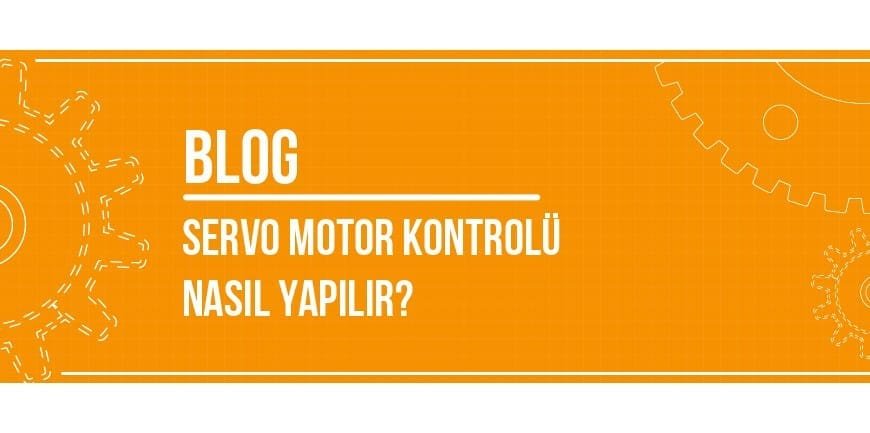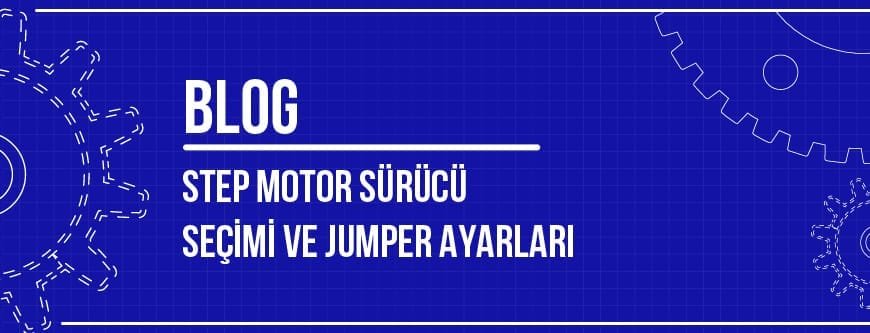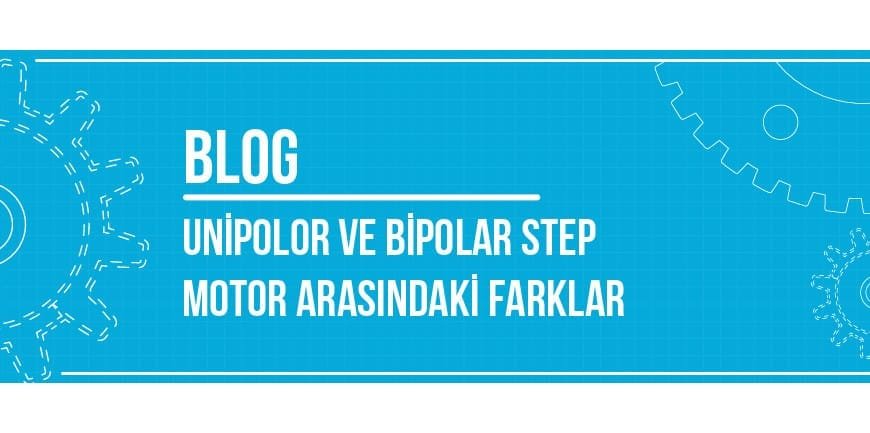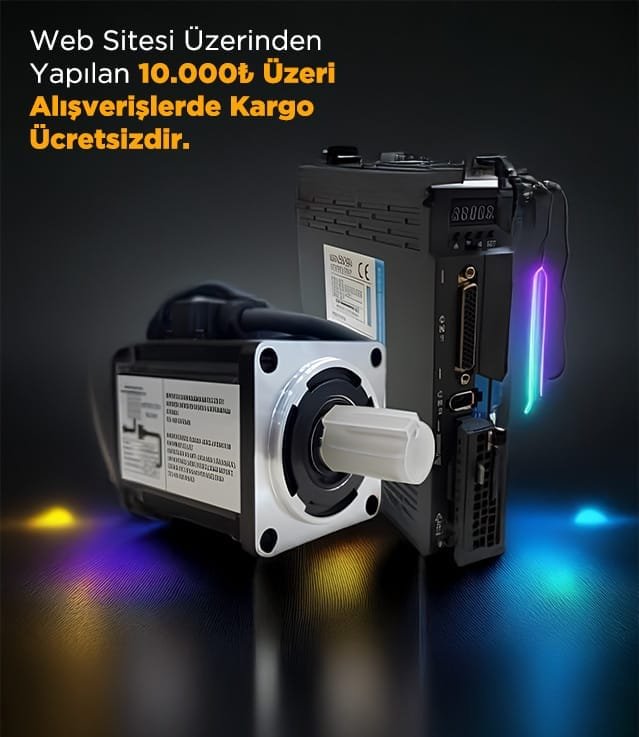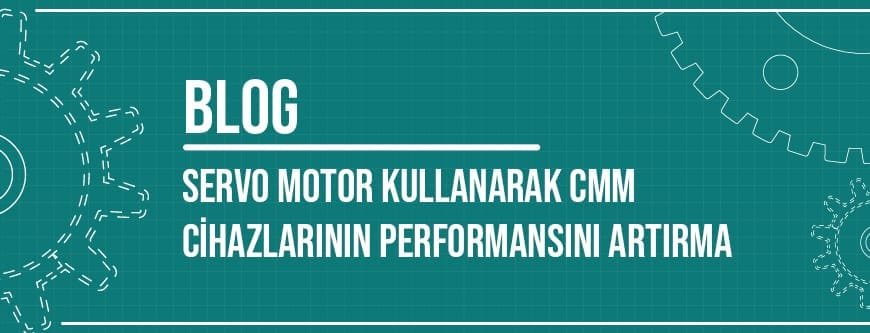
İçindekiler
Improving the Performance of CMM Instruments Using Servo Motors
In industrial production processes, precision measurement and quality control are becoming increasingly important. At this point, CMM (Coordinate Measuring Machine) devices have become an indispensable tool for checking the geometric accuracy and tolerances of production parts. However, the technologies used to maximize the performance of CMMs and achieve the highest accuracy in measurements are of great importance. One of these technologies is servo motors. You can browse our content to get detailed information about the effect of these servo motors on CMM devices. We wish you all a good day.
What is a CMMM Device?
An encoder stepper motor is a special type of motor integrated with a position encoder that monitors and provides feedback on the position and speed information of a stepper motor. Unlike conventional stepper motors, encoder stepper motors operate with a closed-loop control system. This system monitors the real-time movements of the motor, checks whether the motor has missed any steps and corrects the movement if necessary. In this context, the encoder provides precise feedback to verify each step of the motor. This prevents the motor from deviating from the target position. This closed-loop control eliminates step misses in high-speed or heavy-load applications and improves the motor’s motion accuracy. At the same time, it uses only the required power to ensure energy efficiency, allowing the motor to heat up less and run longer. Thanks to these features, it is often preferred in CNC machines, 3D printers, robotic systems and industrial automation applications that require precision measurement.
CMM Device Working Principle
A CMM (Coordinate Measuring Machine) is a device used to precisely measure the geometric dimensions, surface features and tolerances of an object. It collects coordinate data by contacting the surface of the object with a measuring probe or by using non-contact sensors. Thus, thanks to its mobility in the X, Y and Z axes, the device creates a three-dimensional model of the measured object. At the same time, servo motors or stepper motors that guide the probe precisely control its movement, while the instrument’s computer system records the precise coordinates for each point of contact of the probe. This recorded data is processed in software to verify the conformity of the object to the measurement tolerances or to perform a detailed analysis. The result is detailed information about the geometric accuracy and surface properties of the object.
CMM Device Usage Areas
CMM (Coordinate Measuring Machine) is used in many sectors that require precise measurement and quality control. Thus, it provides great convenience in the sectors. To take a detailed look at these sectors in detail;
- Automotive Sector
- Aerospace Industry
- Defense Industry
- Medical Device Production
- Electronics and Micro Mechanics Industry
- Mold and Casting Industry
- General Production Industry
- Energy and Renewable Energy Industry
- Education and Academic Studies
CMM Device Maintenance Requirements
Regular maintenance and calibration of CMM (Coordinate Measuring Machine) devices are essential for accurate and reliable measurements. This requires regular cleaning of the device, especially of sensitive components such as probe tips and guide rails. In this context, the working area must be kept free of dust and at a constant temperature. It is also important to follow the lubrication procedures recommended by the manufacturer to ensure friction-free operation of moving parts. In addition, regular checks of the electronic components, sensors and software should not be forgotten. In conclusion, it is imperative that scheduled maintenance and servicing requirements are fully met to ensure long life and error-free operation of the CMM.
Servo Motor Effect in CMM Devices
In CMM (Coordinate Measuring Machine) devices, servo motors are one of the basic elements of the precise movement and control mechanism. In this context, servo motors control the axis movements that enable the device to perform three-dimensional measurements with high precision. At the same time, thanks to the feedback system, it continuously checks the movement accuracy and achieves the desired positioning accuracy. This ensures that the probe remains in the correct position during measurement and allows it to work with very small tolerances. Furthermore, servo motors minimize vibrations and positioning errors, increasing the reliability of the measurement results.
The advanced servomotor technology used in modern CMM instruments optimizes energy consumption while supporting the long life of the instrument. As a result, servomotors play a critical role in the precision, accuracy and efficiency of CMM instruments and are a cornerstone of the success of these systems in advanced engineering applications.
Considerations When Choosing a Servo Motor for a CMM Device
In CMM (Coordinate Measuring Machine) devices, servo motors play a vital role in the precise measurement and motion control of the device. For this reason, the factors to be considered during servo motor selection are critical for the performance and long-term use of the device. At this point, the important points to be considered during selection are as follows;
- Precision and Accuracy
If the servo motor has high-resolution encoders, the motion accuracy increases. Therefore, the positioning accuracy of the motor is one of the most important criteria as the CMM needs to perform micron-level measurements.
- Torque and Speed Capacity
While the torque provided by the motor guarantees smooth movement of the axes, the speed capability affects the measuring speed of the device. In this case, low torque or insufficient speed capacity can lead to deviations in the performance of the device. Therefore, pay attention to the torque capacity.
- Vibration and Noise Reduction
The low vibration and quiet operation of the servo motor increases both the measurement accuracy and the comfort of use of the device. High vibration motors can negatively affect measurement accuracy. In this context, pay attention to vibration and noise reduction.
- Dynamic Reaction and Control Capability
The fast response time of the servo motor ensures smooth operation of the instrument in situations where sudden acceleration or deceleration is required. This is critical for the correct movement of the probe during measurement. Therefore, importance should be given to its dynamic response
- Energy Efficiency
The energy consumption of the servo motor affects the total costs of the device. An efficient motor both saves energy and supports long-term operation of the device. In this context, energy efficiency should not be ignored.
- Compatibility and Software Integration
The servomotor to be selected must be compatible with the control system of the CMM and allow software integration. This guarantees stable and optimized operation of the device. Therefore, software integration should be emphasized.
- Durability and Reliability
The long life of the motor and its ability to withstand harsh operating conditions reduces the maintenance costs of the device and ensures uninterrupted operation. For this reason, durability should be given importance
- Manufacturer Support and Service
The servo motor provider’s services in technical support, maintenance and spare parts supply should be considered in the selection process.
How to Mount a Servo Motor on a CMM Device?
Installing a servo motor on a CMM (Coordinate Measuring Machine) is a high-precision process and must be carried out with care. First, make sure that the servo motor is compatible with the motion control system and mechanical structure of the device. For this reason, the area where the motor will be mounted must be cleaned of dust and grease and the connection points must be correctly aligned before installation. Then, the alignment of the output shaft of the servo motor and the mechanism that the device will move (for example belt, pulley or gear system) is checked and the correct connection is ensured. Thus, after the mechanical assembly is completed, electronic connections are made with the driver of the servo motor. These connections usually include the power cable, encoder cable and control signal cables. After the connections, calibration and motion tests are performed to ensure that the servo motor communicates with the device’s software. In this process, conditions such as vibration, overheating and incorrect positioning should be checked. This ensures that the servomotor is running smoothly and the CMM is measuring with high precision.
The Role of CMM Device and Servo Motors in Industrial Applications
While CMM devices optimize quality assurance processes by checking the geometric accuracy of products, servo motors enable these devices to operate with high precision. In this context, servo motors control the axis movements of CMM devices, enabling the probe to reach the right points and collect measurement data with high accuracy. Especially in sectors such as automotive, aerospace, defense industry and medical device manufacturing, parts with complex geometries need to be analyzed with micron-level measurement accuracy. Servo motors increase the efficiency of CMM devices with their fast response times and low vibration characteristics, while minimizing motion errors and guaranteeing the reliability of measurement results. At the same time, CMM devices and servo motors integrated into automation lines accelerate production processes while minimizing human error. This combination not only raises quality standards in industrial production, but also provides a competitive advantage by reducing costs.
In modern industrial applications, the compatibility of CMM instruments and servomotors is essential where precision and efficiency are critical requirements.
You can choose the most suitable servo motor by contacting the expert team of Şahin Rulman for servo motors used in CMM devices.
FAQ
Does the CMM device affect the life of the servo motor?
The CMM device can indirectly affect the lifetime of the servomotor. Servo motor life is directly related to the conditions of use, correct calibration, regular maintenance and environmental factors in the operating environment of the device. Therefore, proper operation of the moving axes of the CMM and keeping mechanical stress to a minimum reduces servomotor wear and ensures long life. Furthermore, not overloading the motor and keeping it within its operating limits maintains the performance of both the CMM and the servomotor.
How to synchronize the servo motor with the CMM?
The synchronization between the servomotor and the CMM device is accomplished through the motor drives and the device’s control software. At this point, the servomotor’s feedback system (encoder) continuously monitors the position and movement of the motor and matches it with the CMM’s control system. This feedback mechanism ensures that the motor is in the correct position during movement. In addition, motion plans and speed settings can be programmed through the device’s software, helping the servomotor to work in harmony with the CMM device.
Why are CMMs and servomotors used together?
CMM machines work with servomotors that offer high accuracy and repeatability to meet precision measurement requirements. Servomotors control the axis movements of the CMM, ensuring the probe reaches the right points and minimizing movement errors. In addition, the fast response time, vibration-free motion and energy efficiency of servomotors enhance the performance of CMM instruments. This combination is critical for measuring parts with complex geometries, especially in the automotive, aerospace, defense and medical industries.
Diğer Blog Yazılarımız



